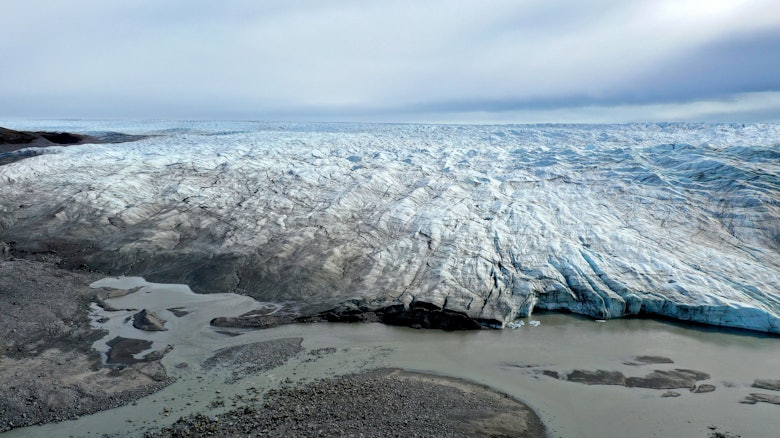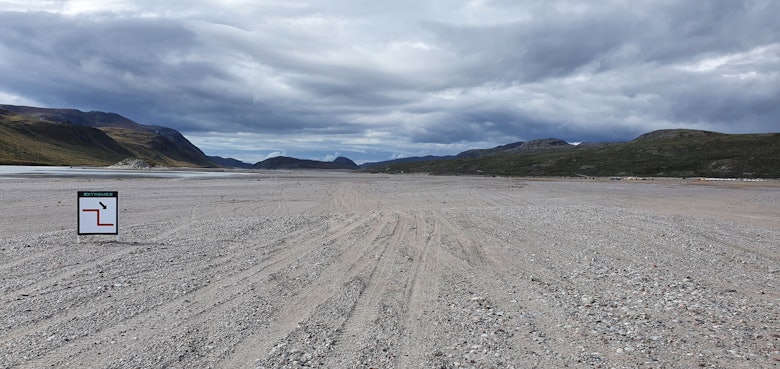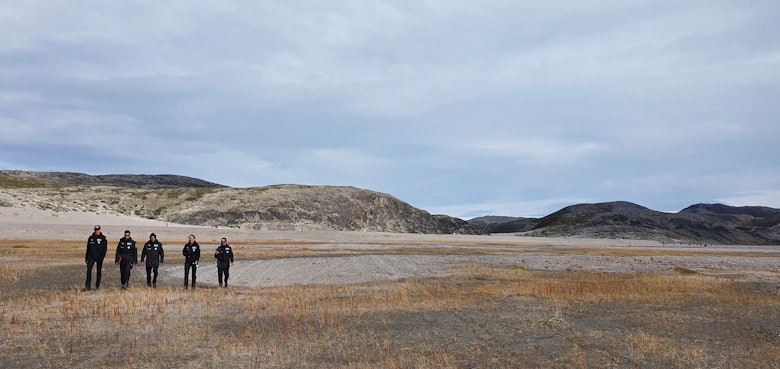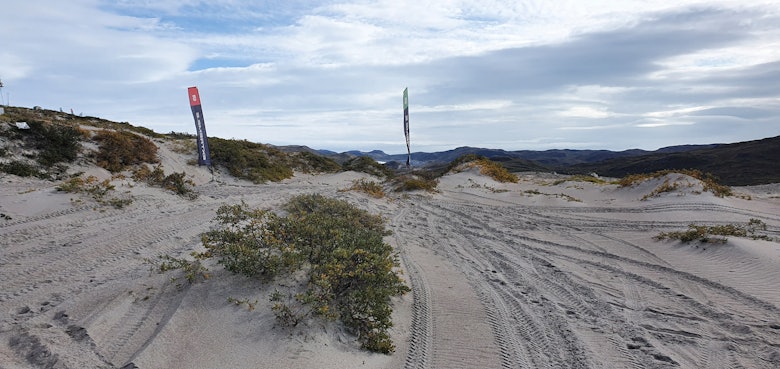Swapping tropical deserts for a polar one hasn’t stopped Extreme E from making sand its surface of choice again for this weekend’s Arctic X-Prix.
So much of the first two venues is visible in the third, from the water-side sprints similar to Senegal to the sand dunes of Saudi Arabia. The standout feature here is the Russell Glacier looming behind the drivers.
The 5.386-mile lap begins out on the expansive glacial river bed, and the Grid Play feature that enables drivers to choose their spot on the starting line could play a part heading to the sharp left of gate one.
There, the surface immediately turns into the softest of sands, and cars will spread out to find the best line for around 200 meters before it becomes more gritty and grippy under the wheels. It’s the kind of area where Chip Ganassi Racing has shone so far.

Flatter but softer sand or more compact mounds are the options heading to the second gate, which needs a tight line before a deeply rutted run uphill to gate three which is so wide that drivers could aim for the left – where Carlos Sainz told DirtFish it was “very rough” to attempt – or on the right where it was flatter but not necessarily faster.
However, taking the latter option does make a straighter line for gate four. One team on the track walk even considered veering off course entirely to build up speed and cut back in, but decided it was too long a detour.
The lap genuinely splits before gate four, which will make for a good overtaking spot, and it then becomes very much like Saudi with a sprint to a cliff section and a rutted climb bound to spray sand into the vision of chasing cars and prevent them from lining up a move on the descent back onto the valleyed out area.

A tight hairpin brings drivers back up onto the cliff area and severely rutted climbs until the first major terrain change as the cars hit compact soil surrounded either side by meltwater ponds and flooded ground. If it rains during the weekend, this will go from being a single-lane blast to a mudbath.
Once past the water and ascending again the lap returns to soft sand, and it could be really difficult if rain hits the previous section. From the summit it’s straight back down to the river bed but onto a rougher texture area which will be used as the points-awarding super sector.
This second sector has been heavily revised from the originally intended layout, and now consists of very long straights between gates over fairly consistent terrain and with few obstacles such as troughs and sharp stones (all signposted during the track walk).
The gate 24 jump starts as sand but like a Fab ice lolly has a granular top
The change has shortened the track, but does mean cars should remain intact through to the final sector where the most dramatic features are. While there is a fastest line through most of sector two, if a driver doesn’t deploy the hyperdrive power boost then picking that best line in battle won’t be enough to stay ahead.
Halfway across the plain of the riverbed, which is a couple of miles long, is gate 23. This is approached after the sharp left of gate 22, and heads onto a curving track that, you’d think, would lead most drivers out of the way to the steep jump that is gate 24. However it only took 10 seconds for the first team to reach that point to realize you didn’t need to take the track, and could cut straight from one gate to the next.
But this sandy area is the lowest point of the track, and if it rains (very rare for this area yet forecast to) it will be hard to tell from the paddock, or any of the points photographers will be at, whether cutting so severely is still worth it.

The gate 24 jump starts as sand but like a Fab ice lolly has a granular top that should help drivers get traction while the front wheels are airborne as they go over the crest. The run from there to the next gate is another hyperdrive opportunity, before gate 26 where a sharp left brings drivers onto a clay-like surface due to the meltwater depositing microbes into the soil that multiply and lead to a change in consistency of the ground.
That precedes another shaft of sand before the ‘rock garden’ section, which drops right onto the riverside and is strewn with rocks the size of watermelons. The closer to the water, the smaller the rocks, but shakedown runs of the Odyssey 21 on the course showed that taking the rockier route at 24-30mph was no issue. It’s a section XE is confident will show off driver talent.

After that it’s full throttle around the finish line rather than across it (unless you’re in qualifying or are the second driver of the car in a race), then into a mogul field-like area with Greenland’s answer to Saudi’s camel grass.
The uneven pattern of mounds can destroy suspension, and in the rain it will leave rear ends going in all directions. Any damage there could prevent a driver from slowing for the switch zone’s 18.6mph speed limit not long after that ends lap one.





